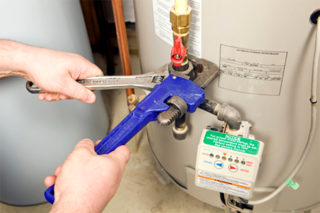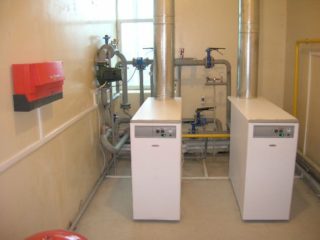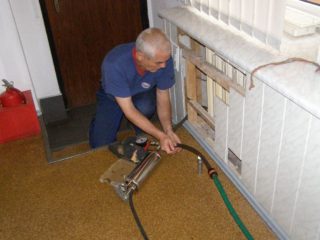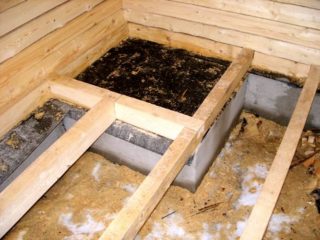During the operation of boiler equipment, indicators of its power and efficiency level may decrease. Replacing a heating boiler in a private house is most often required when connecting additional devices, lack of functions of a single-circuit model, breakdowns or wear. The installation procedure for the new unit is regulated by the legislation of the Russian Federation and is carried out only with permits.
Documents that will be needed when replacing

The requirements according to which the heating device can be changed are spelled out in the Civil Code of the Russian Federation, Government Decisions No. 1314 and 1203, SNiPe II-35-76. Dismantling of the old boiler is allowed only in the presence of technical conditions from the gas service. Its specialists will need to provide documents:
- documents confirming the ownership of the house and the adjacent plot;
- owner's passport;
- Gorgaz application for a permit.
After receiving the application, the owner of the house will be put in line for turning off the equipment. At the end of dismantling, a list of technical conditions is issued. If only a new boiler is installed, the home ownership project does not change. When transferring the boiler room, changing the heating circuit, a new project document is being developed. It has the right to make up exclusively a company with a license for the design of gas systems.
For connecting a gas boiler without coordinating documentation, the owners on the basis of paragraph 19 of Art. 7 of the Administrative Code are fined 10-15 thousand rubles.
Rules, requirements, fines
When installing a new boiler, the legal requirements must be taken into account:
- Placement of the device in a non-residential room from 6-8 m2 with a door, good natural ventilation (window).
- The location of models with a closed firebox in rooms with an area of 9 m2 or more.
- Inadmissibility of unauthorized connection to the highway - the boiler insert without permission, the connection of the highway in the presence of a failure of an inter-regional or city gas service.
- Additional charge for illegally used gas upon detection of an unauthorized tie-in.
- Criminal liability for non-payment of gas - according to Art. 158 of the Criminal Code is classified as theft.
- If you need to change the place of the boiler room, a classic chimney system is organized in the new room.
- Admissibility of installing closed boilers up to 60 kW in a non-residential building with a window.
Wall-mounted models are changed once every 8 years, floor-mounted - after 15 years or based on the manufacturer's warranty period.
Features of dismantling old equipment
In case of replacing the old gas boiler with a new one in a private house, dismantling is carried out. The specialists of the outsourcer company with the certificate perform:
- Flush the line to remove deposits and debris from the circuit.
- Coolant drain from the heating system.
- Shutdown - gas is shut off, then the unit is disconnected from the heating circuit and cold water supply.
- Removing disconnected equipment from the boiler room.
If you want to change the device with a closed firebox, it is disconnected from the ventilation.
Installation procedure for a new heater
Federal Law No. 190 sets the rules for the installation of a new boiler for multi-storey buildings.In an apartment connected to a centralized highway, a complete replacement of the boiler is unacceptable. The exception is individual sources specified in Government Decision No. 307.
For private houses, the requirements are not so stringent - gas specialists and owners can engage in installation work. Independent events are held as follows:
- Installation of a non-combustible shield for wall appliances and a foundation for flooring.
- Control the location of the unit relative to the wall - with a gap of 20-30 cm.
- Connection of heating and water supply only after installation of the boiler.
- Equipping the water supply pipe from the central system with a filter to protect the heat exchanger from clogging.
- Sealing compounds with a special tool or fum tape.
- Connecting the unit to the 200 V network and grounding the line.
- The connection of the chimney of the classic equipment with a standard chimney, turbocharged - with a coaxial pipe.
- System monitoring for leaks. Water is poured into the line and pressure indicators of 0.8-1.8 bar are checked.
For added safety, a voltage regulator is connected to the boiler unit.
Boiler and heating test
For start-up and testing, you must contact the office of the gas supplier. A service representative connects the boiler to the gas system and performs its initial start-up. Before starting, a visual check of communications is performed for malfunctions, leaks and other defects.
If the system is operational, the boiler meets the declared characteristics, the owner is issued a permit for operation. Gas workers also draw up an installation certificate. The customer sends him to Gorgaz.
In addition to the act of work, a written notice of their implementation is sent to Gorgaz. The owner of the house must provide a document 5 days after the installation of the device. Notification papers are accompanied by acts on inspection and connection of the ventilation system, chimney flue, an agreement on the maintenance of the system.
If defects are found at the time of testing, the start of use of the boiler is delayed until they are eliminated.
The specifics of replacing the heating furnace with AGV
Old AOGVs with one circuit can be replaced by double-circuit modifications with their excess power, incompatibility with water heated floors (the return is mixed with a valve). Work is also carried out if the equipment is not equipped with weather-dependent automation.
The legislation establishes the procedure for replacing a heating gas furnace with an AGV - only with the receipt of new technical conditions:
- Contact Gorgaz for documentation.
- Writing the application in 2 copies on the technical conditions, if they were not received earlier. The application shall indicate the data of the citizen, the planned time of commissioning, the maximum capacity of the equipment.
- Application for technological connection in the presence of technical specifications in free form. The details of the owner, the name and location of the facility, the type of gas consumption, the terms of development and commissioning, the planned capacity, number and date of receipt of the technical specifications are indicated.
- Appendix to the application text of accompanying documents. We need a passport, a certificate of land and house ownership, a plan and a topographic map of the site, and settlement documents.
- Installing new equipment and connecting it to the system.
Installation work should only be carried out by specialists.
Features of replacing boilers with the same capacity
If there is a new unit with the parameters of the old one, the replacement of the gas boiler on the basis of paragraph 61 (1) of PP No. 1203 is simplified. It is enough for the owner to submit a notice of completed work to Gorgaz. The following shall be attached to the document:
- certificate confirming the fact of connection;
- Act on inspection of ventilation and chimney channels;
- system maintenance contract for a period of 1 year.
Gorgaz considers the appeal and issues a permit. After receiving the paper, you can replace it, check the equipment and put it into operation.
Before installing a new gas boiler, it is advisable to consult your local service. Knowledge of connection rules, documentation and work procedures will help to avoid inaccuracies and penalties.







